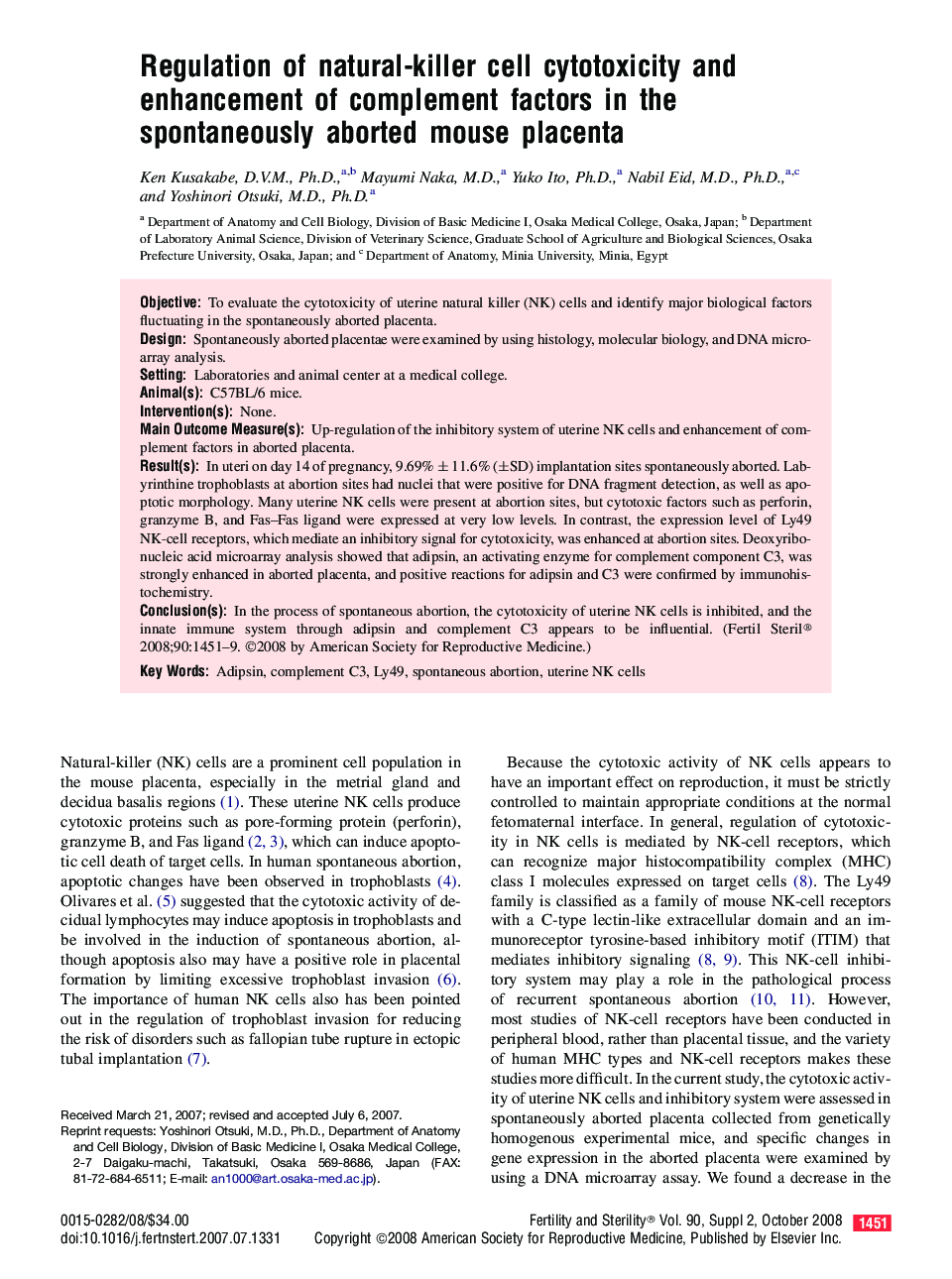| Article ID | Journal | Published Year | Pages | File Type |
|---|---|---|---|---|
| 3939078 | Fertility and Sterility | 2008 | 9 Pages |
ObjectiveTo evaluate the cytotoxicity of uterine natural killer (NK) cells and identify major biological factors fluctuating in the spontaneously aborted placenta.DesignSpontaneously aborted placentae were examined by using histology, molecular biology, and DNA microarray analysis.SettingLaboratories and animal center at a medical college.Animal(s)C57BL/6 mice.Intervention(s)None.Main Outcome Measure(s)Up-regulation of the inhibitory system of uterine NK cells and enhancement of complement factors in aborted placenta.Result(s)In uteri on day 14 of pregnancy, 9.69% ± 11.6% (±SD) implantation sites spontaneously aborted. Labyrinthine trophoblasts at abortion sites had nuclei that were positive for DNA fragment detection, as well as apoptotic morphology. Many uterine NK cells were present at abortion sites, but cytotoxic factors such as perforin, granzyme B, and Fas–Fas ligand were expressed at very low levels. In contrast, the expression level of Ly49 NK-cell receptors, which mediate an inhibitory signal for cytotoxicity, was enhanced at abortion sites. Deoxyribonucleic acid microarray analysis showed that adipsin, an activating enzyme for complement component C3, was strongly enhanced in aborted placenta, and positive reactions for adipsin and C3 were confirmed by immunohistochemistry.Conclusion(s)In the process of spontaneous abortion, the cytotoxicity of uterine NK cells is inhibited, and the innate immune system through adipsin and complement C3 appears to be influential.
